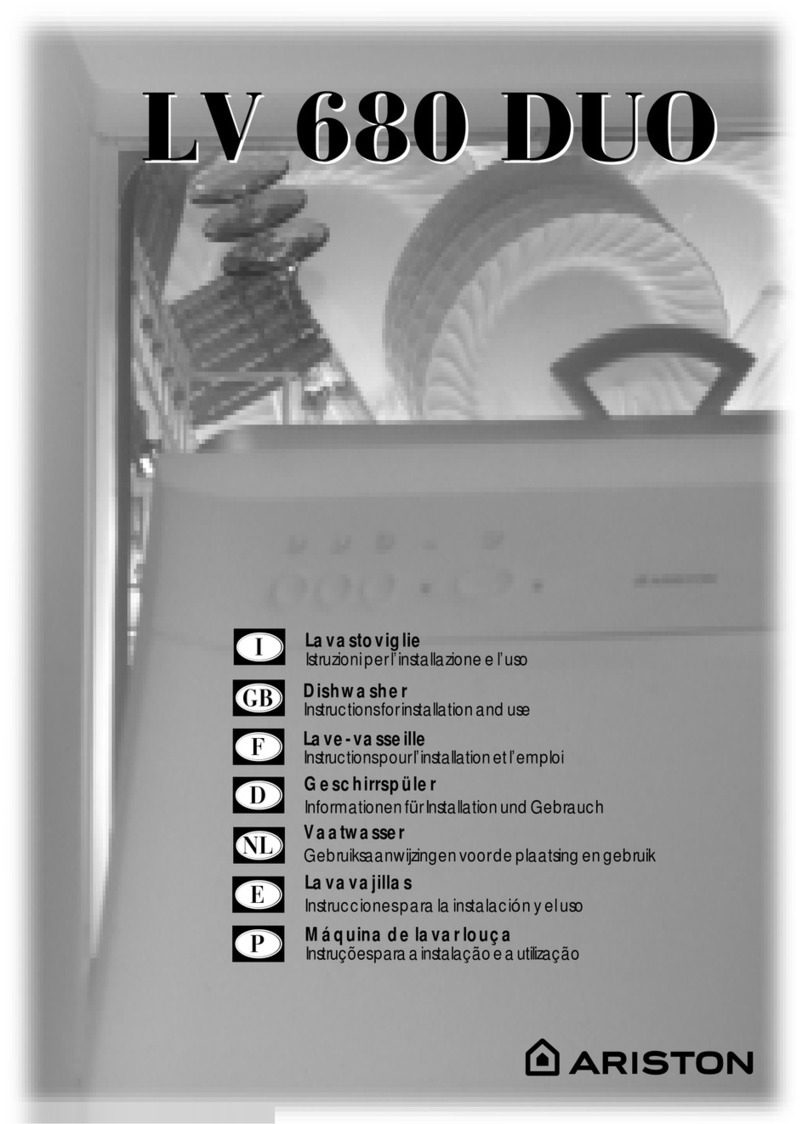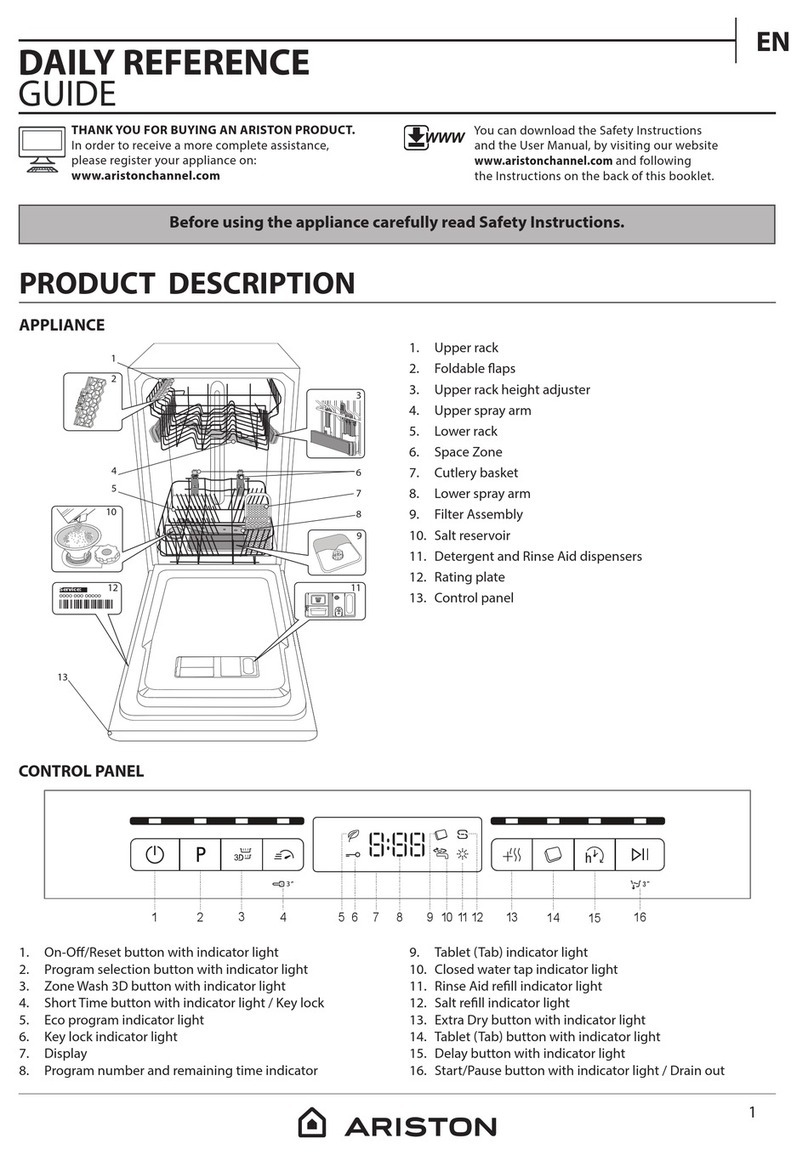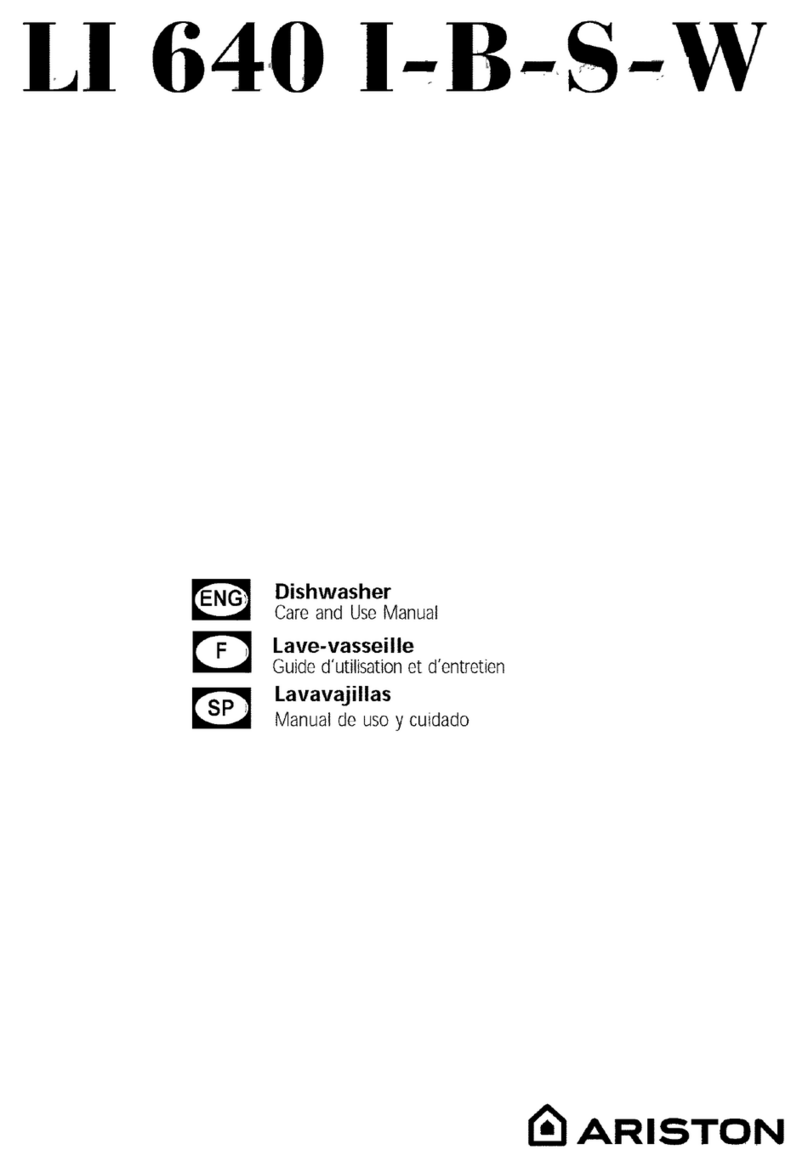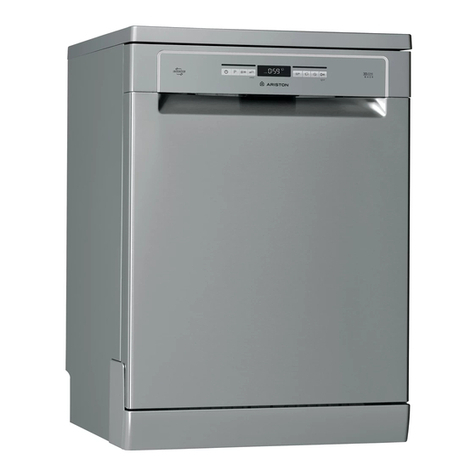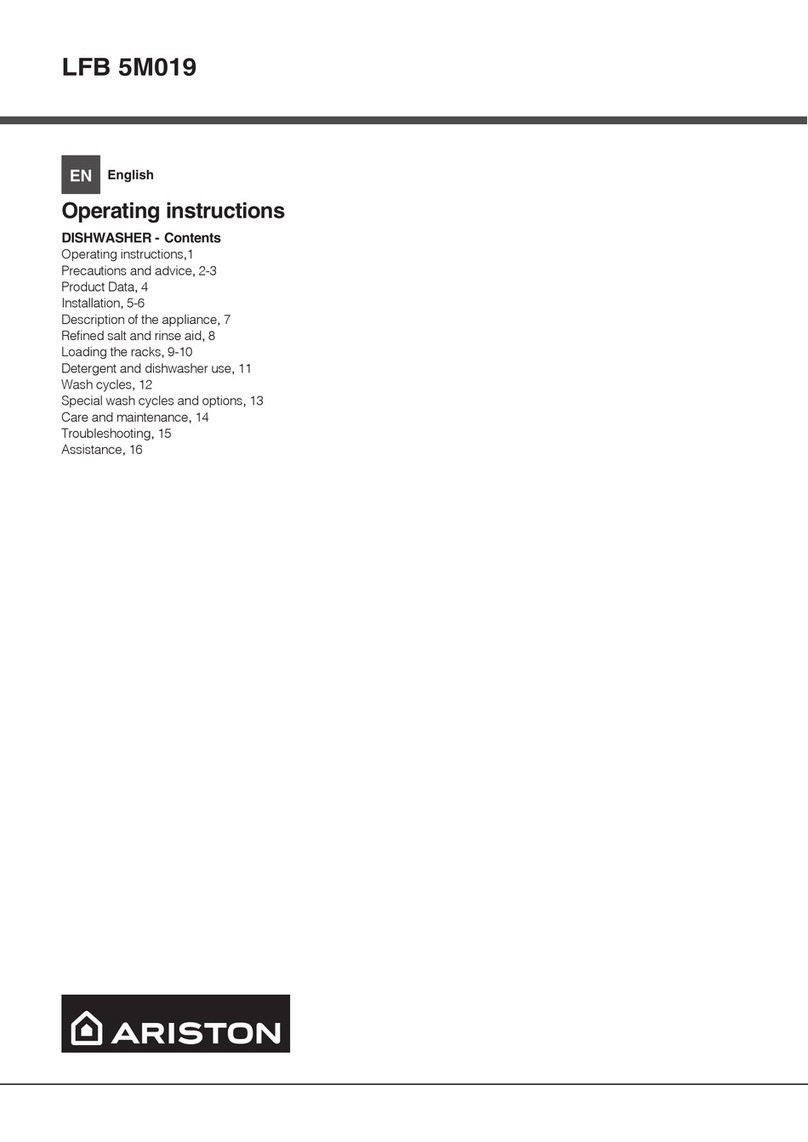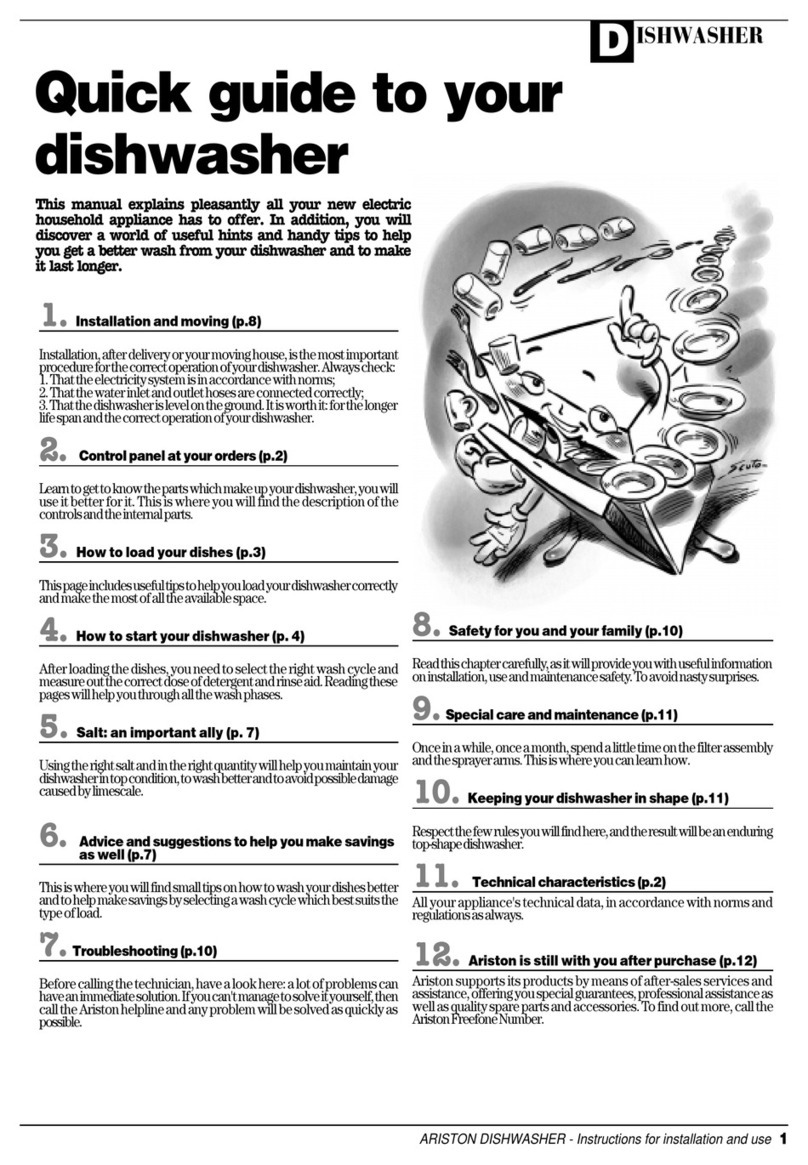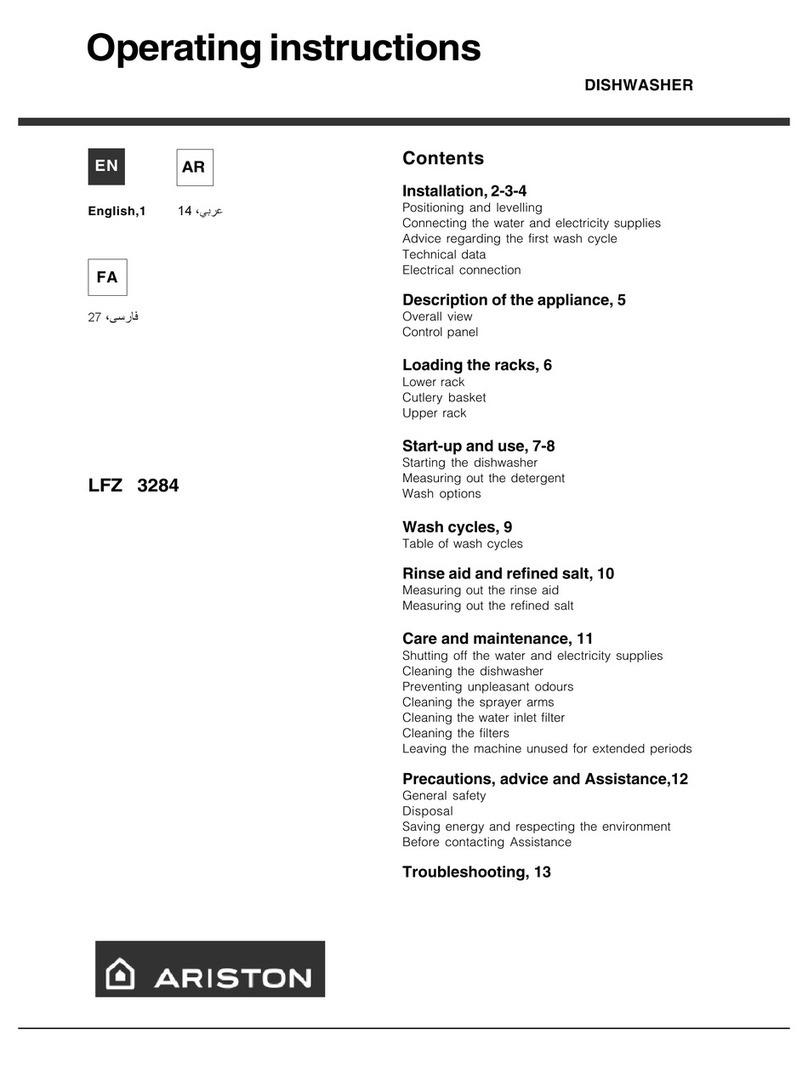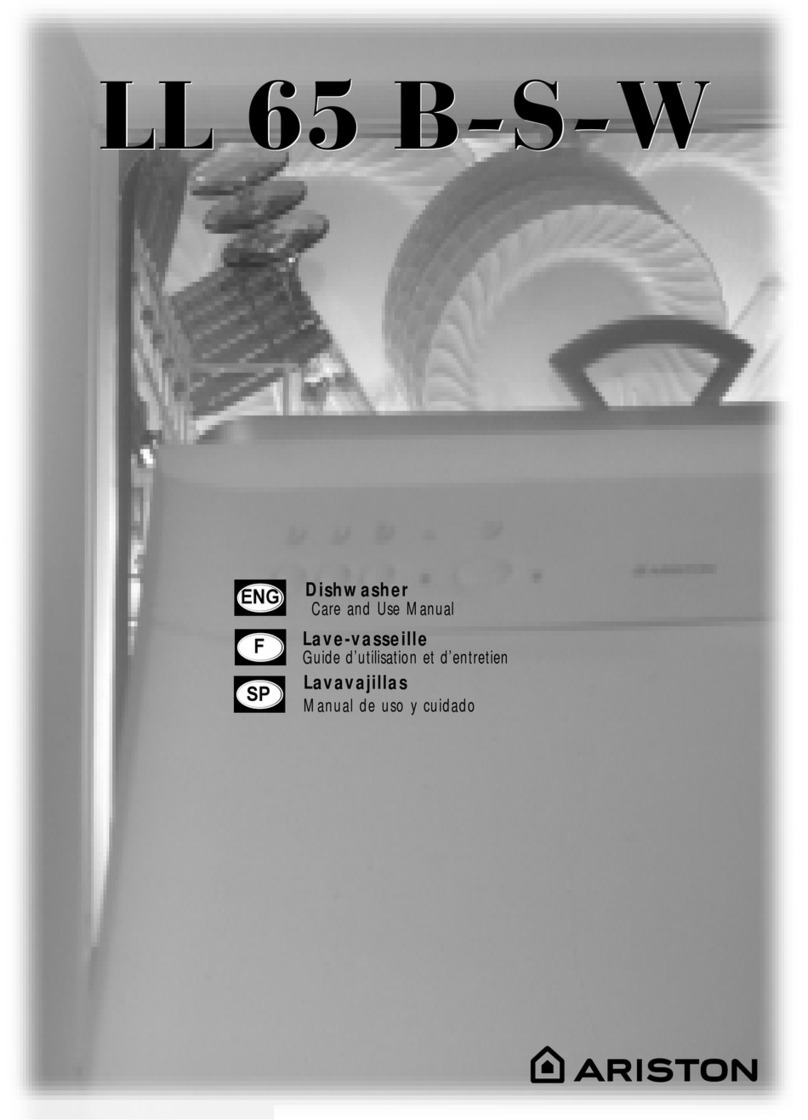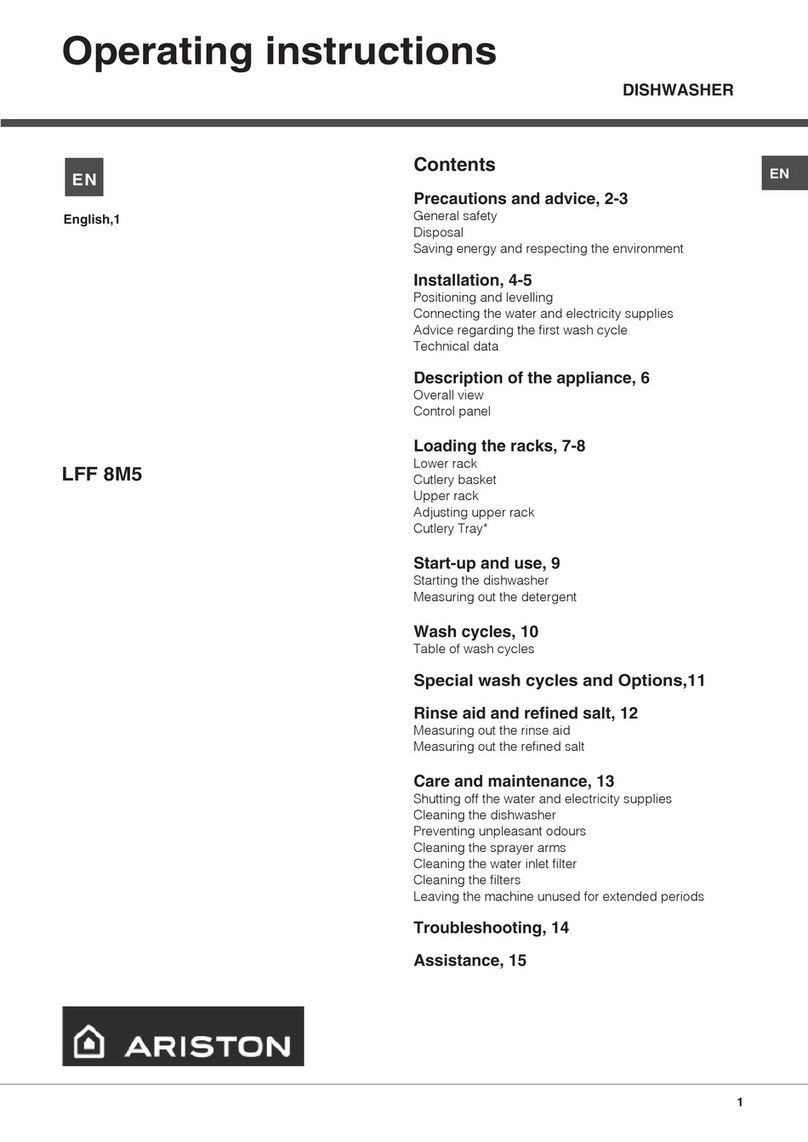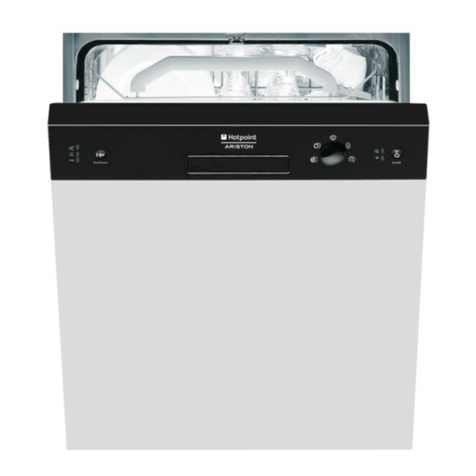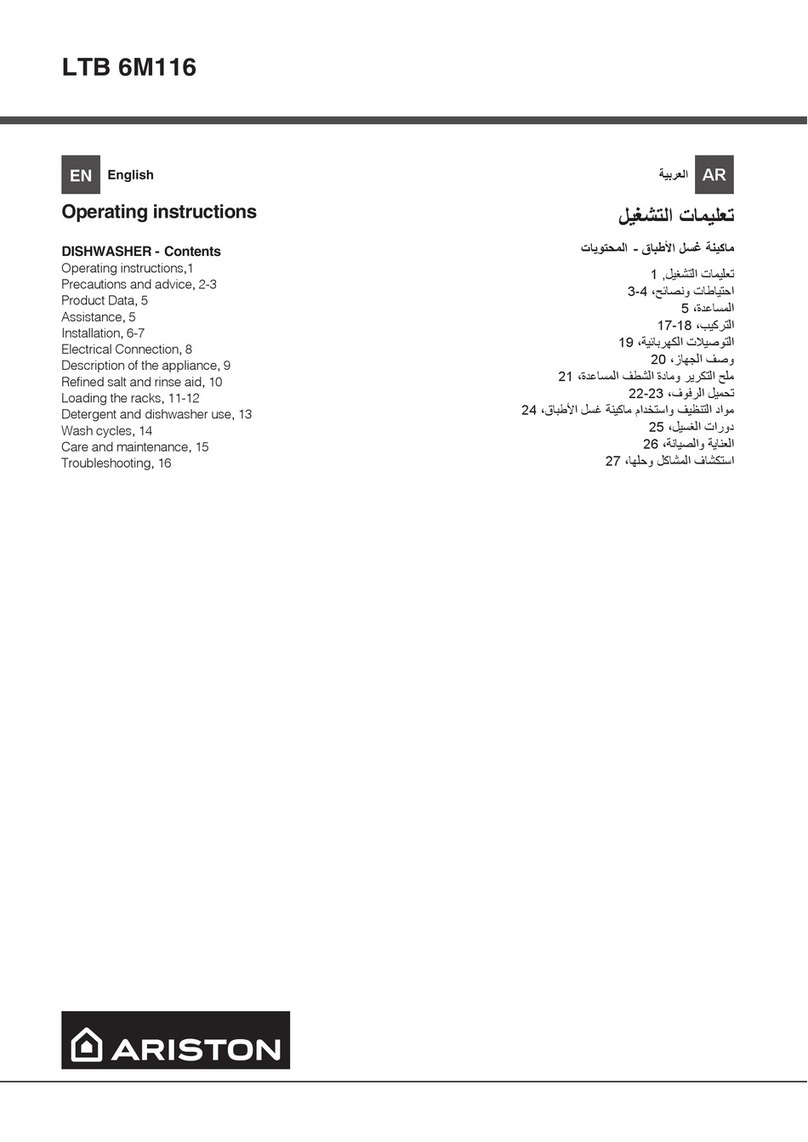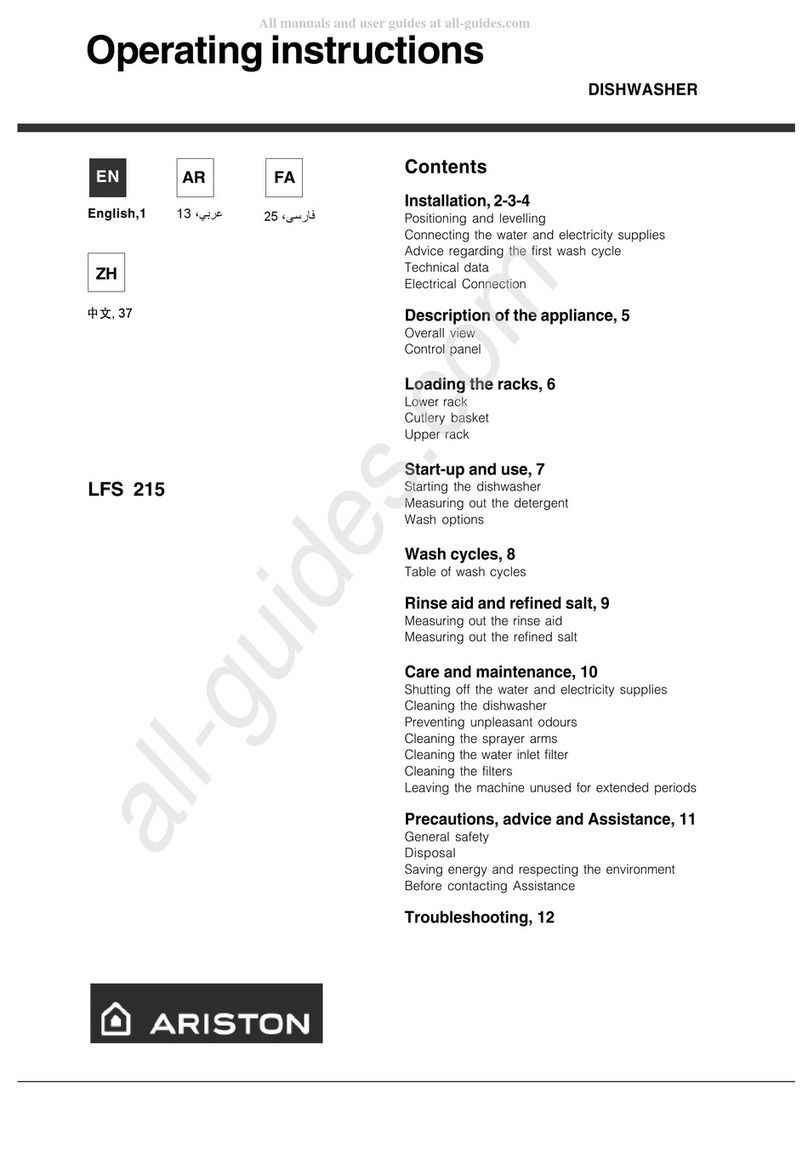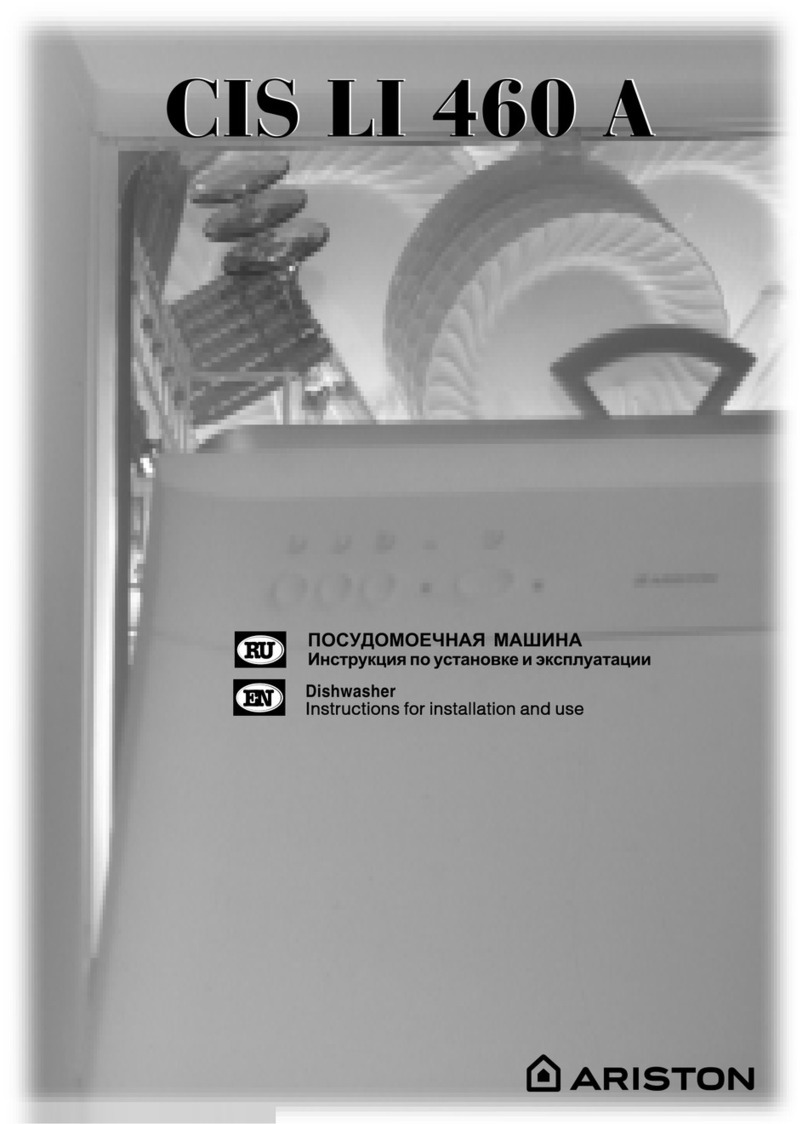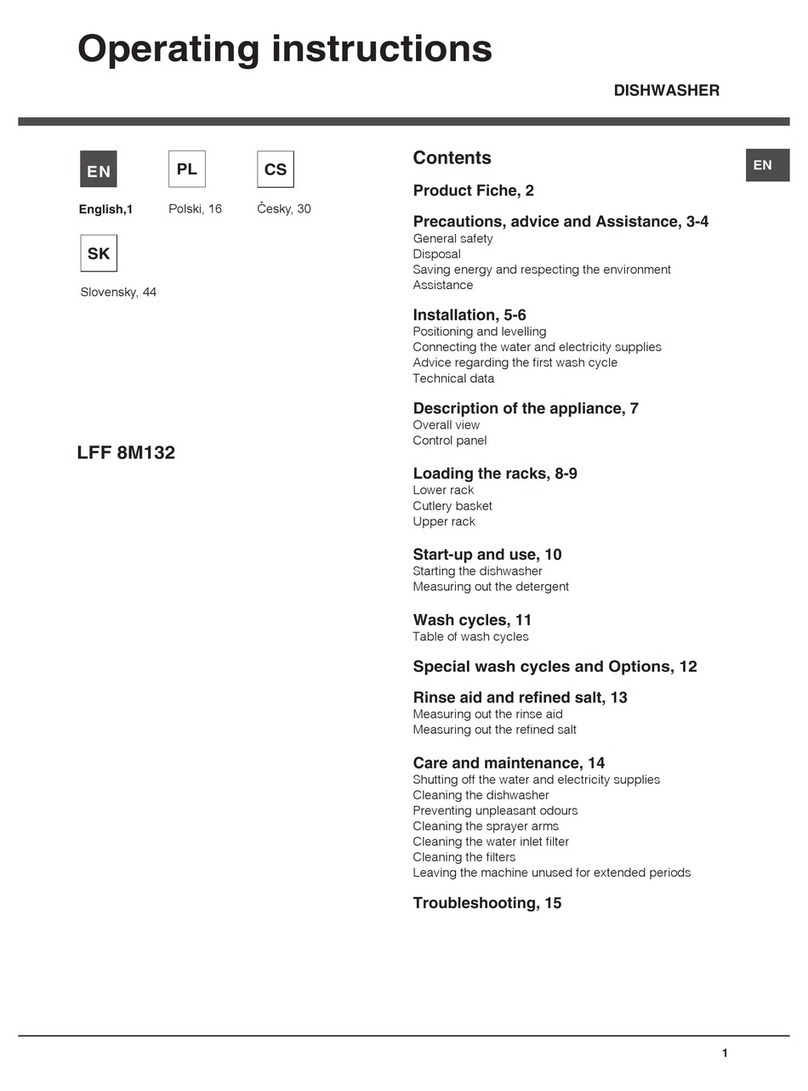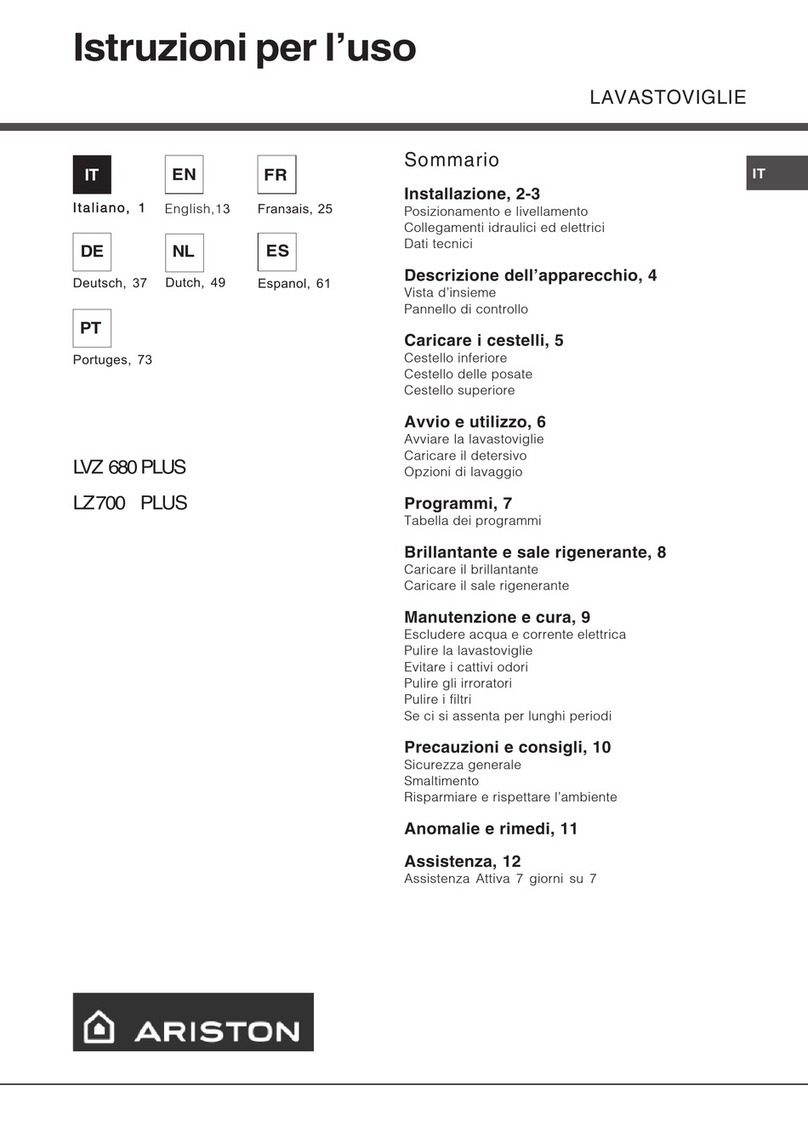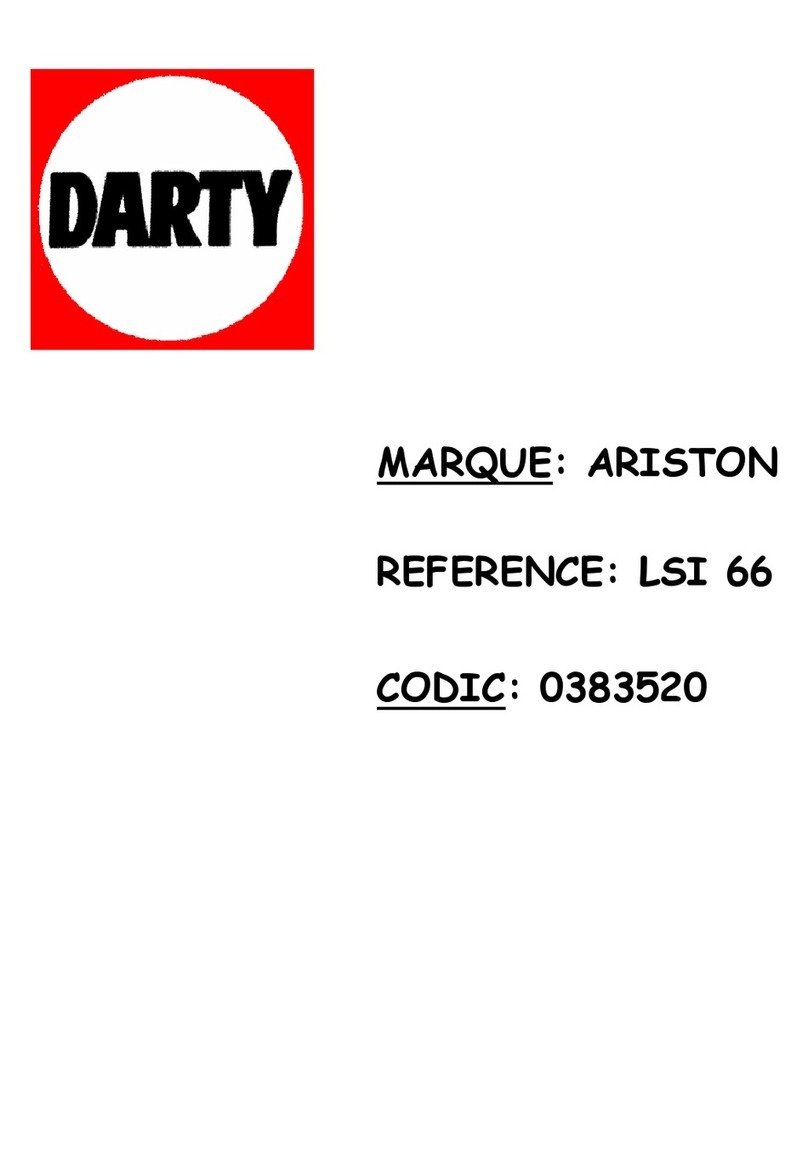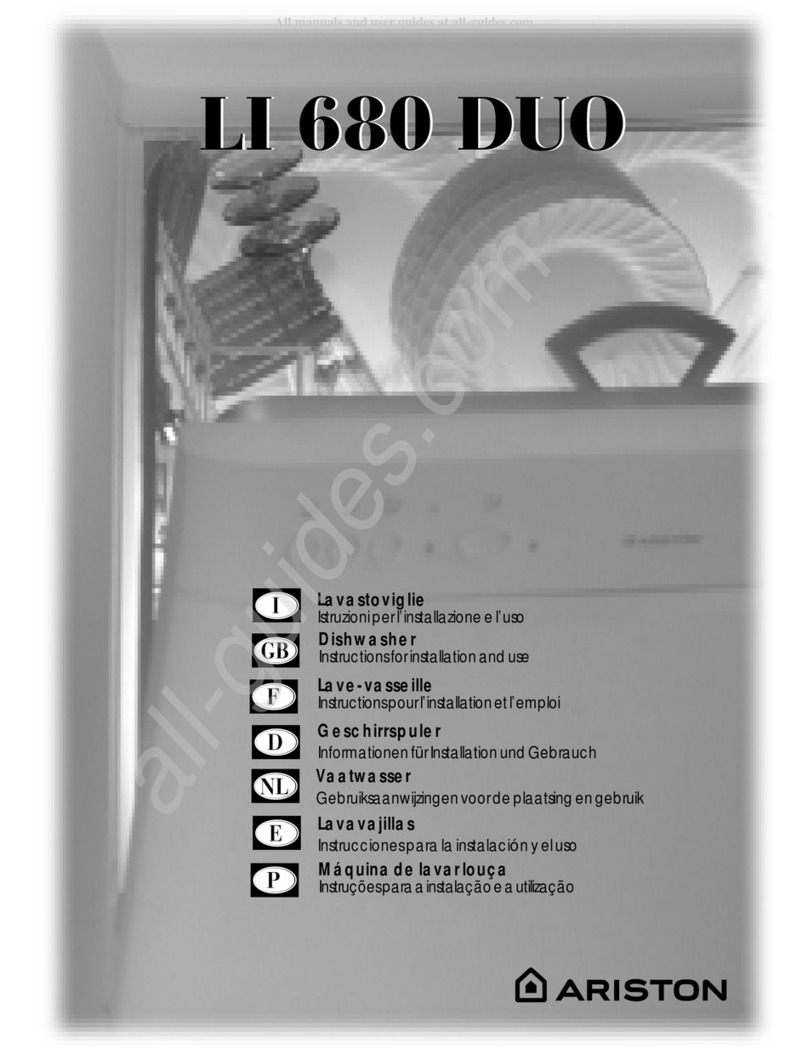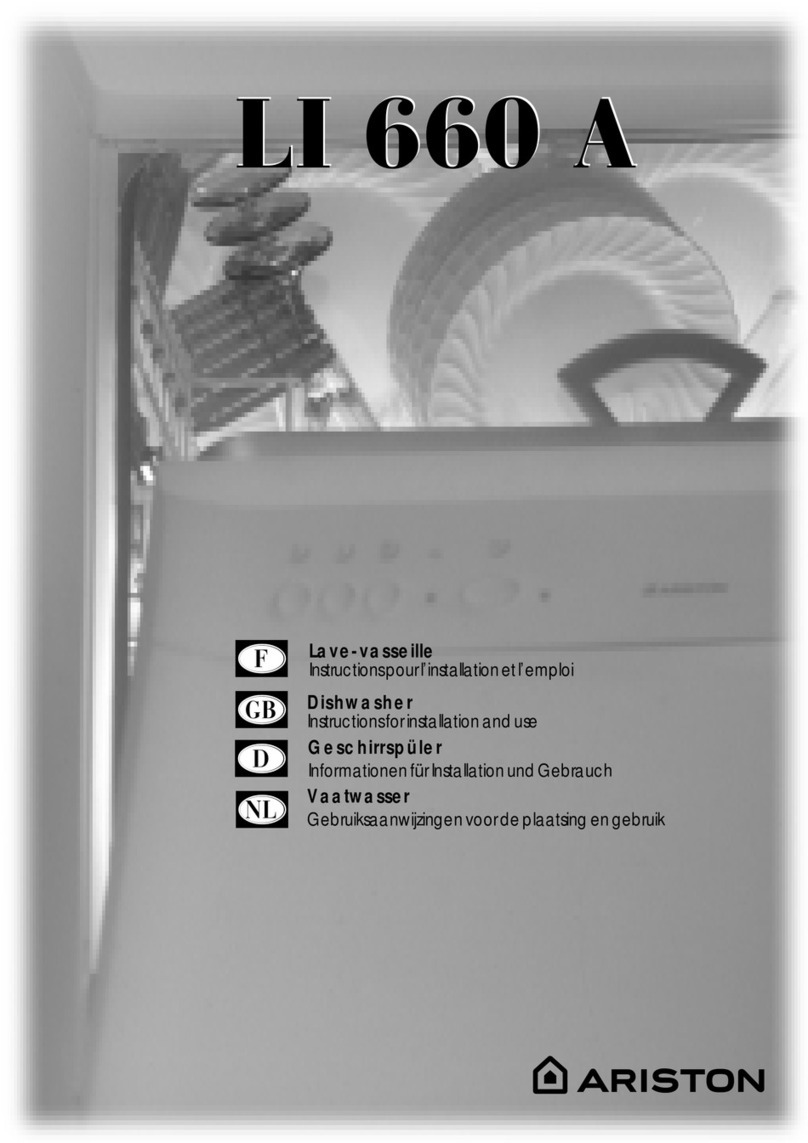ARISTON DISHWASHER - Instructions for installation and use
9
DISHWASHER
Safety within your home
Your dishwasher was built in accordance with the strictest international safety regulations. They protect
you and your family. Read the instructions and information contained in this manual: they will provide
you with useful hints as to installation, use and maintenance safety. To avoid nasty surprises.
1. Dispose of the packaging
materialcarefully (follow the
instructionson how to divide
your rubbish up provided by
yourlocalCouncil)
2. Afterremovingthepackaging,
check to make sure your
applianceis intact. If in doubt,
contact a qualified
professional.
3. Yourdishwasher mustonlybe
usedbyadultsandforwashing
householddishes,accordingto
the instructions included in
thismanual. Do not touch the
appliance with wet hands or
feet or barefoot.
4. We discourage the use of
extension leads and multiple
plugs.If the electricity supply
wire is not long enough, then
have it replaced with one of
the correct length and
remember that it should be
free of bends or dangerous
kinks.
5. If the appliance is not operating
properly or if maintenance
operations are necessary,
disconnect the dishwasher
fromthemainspowersupply
(unplugit!).
6. Keep children away from the
dishwasherwhenitisopenand
keep detergents out of their
reach.
7. Your dishwasher is not to be
installedoutdoors, not even if
the area is covered by a roof:
it is extremely dangerous to
leave it exposed to rain and
thunderstorms.
8. Do not touch the heating
elementduringorstraightafter
a wash cycle.
9. Do not lean or sit on the door
when it is open, as this could
overturnthe dishwasher.
10. Ifthe appliancemalfunctions,
turnoff thewaterinlet tap and
disconnect the plug from the
wall socket. Then try
consultingthe sectionentitled
"I you have a problem, read
this".If you cannotresolvethe
problem,thencalltheservice
centre.
If you have a problem, read this
Your dishwasher may not work or not function properly. In many cases, these are problems which can be
solved without having to call for a technician. Before calling the service centre, always check the points
below.
The dishwasher won't
start
■Is the water supply tap turned
on?
■Is the water supply tap
connectedtothehose properly?
■Has the water in your home
been cut off?
■Is the pressure of the water
supplysufficient?
■Is the hose bent?
■Isthe filter on the water supply
hoseblocked?
■Isthe dishwasher dooropen?
The dishes are not
clean.
■Have you put the right amount
ofdetergent intothedispenser?
■Is the wash cycle suitable for
the dishes you have placed
insidetheappliance?
■Are the filter and microfilter
clean?
■Can the sprayer arms turn
freely?
Never call upon
the services of
unauthorised
technicians and
always refuse
spare parts
that are not
originals.
The dishwasher won't
drain.
■Isthe drain hose bent?
Limescale deposits or
a white film form on
the dishes.
■Is the lid on the salt container
closedproperly?
■Isthe rinse aid dosage correct?
Error messages.
Thedishwasher is equippedwitha
safety system which is able to
detectanyoperating anomalies.
These anomalies are signalled by
the rapid flashing of one of the
wash cycle indicator lights M.
If the indicator light for the soak
cycle flashes (seewash cycletable),
cancelthe wash cyclebyfollowing
the instructions indicated in the
"Modifying a wash cycle in
progress" paragraph on page 4.
Now check whether there is any
waterinthemainssupplyandthat
the tap is turned on; if the error
message persists, then call for
technical assistance, indicating
whichmessageappeared.
If the indicator light for any wash
cycle apart from the soak cycle
flashes rapidly, turn the appliance
off and call for technical
assistance, indicating which
messageappeared.
Troubleshooting
You have checked
everything, but the
dishwasher still doesn't
work and the problem
persists?
Call an authorised service centre
nearyouandremembertomention:
thetype of malfunction
themodelmark (Mod.)andthe
serialnumber(S/N.)indicatedon
theratingplatelocated ontheinner
door,toone side.
11. Once taken out of use,
appliances must be made
inoperable: cut the power
supply wire and damage the
doorlock.
I only want an authorised
specialised technician with original
Ariston guaranteed spare parts
